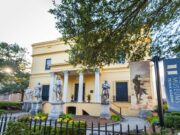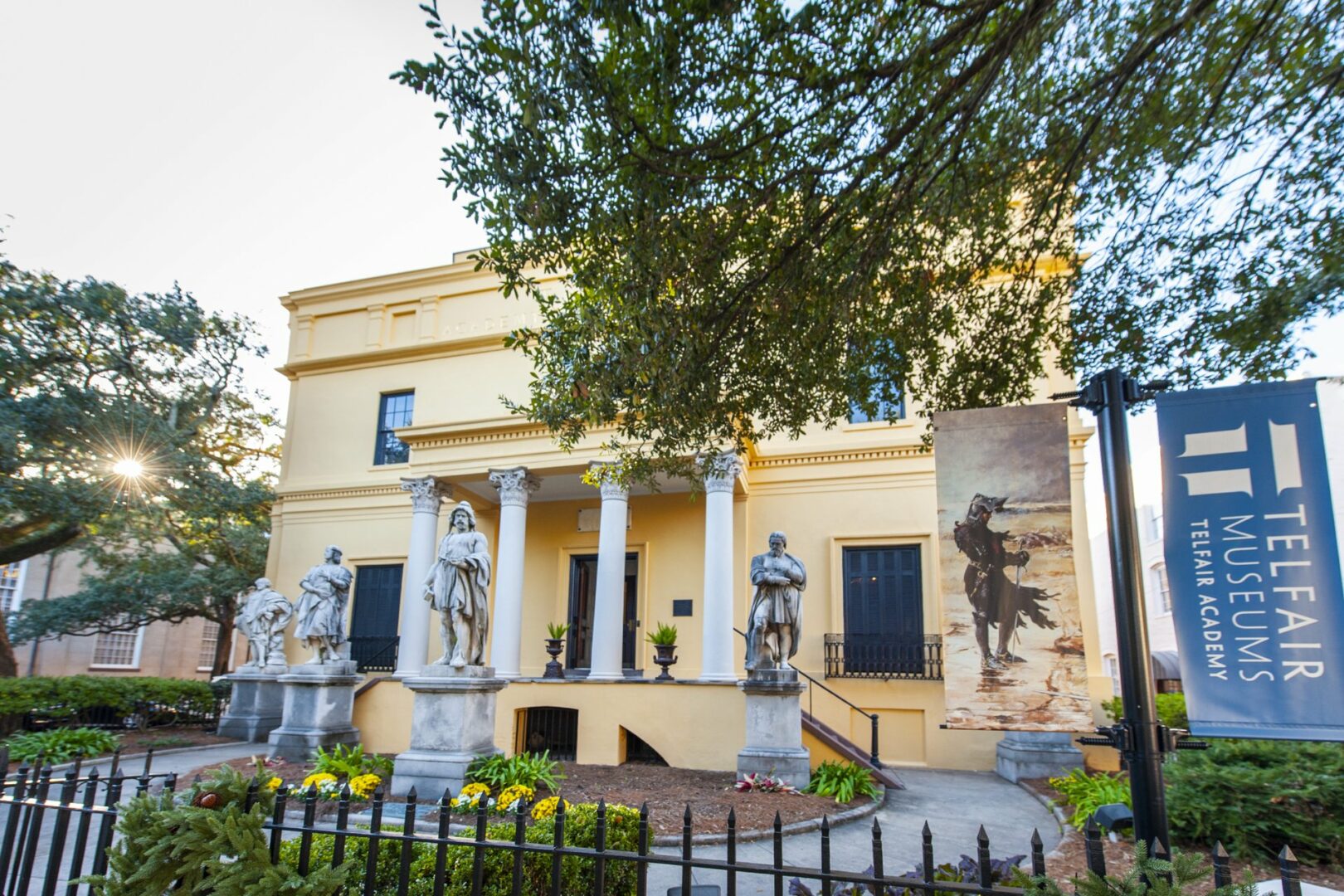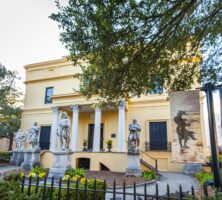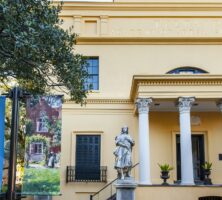The three sites of Telfair Museums in Savannah—the Telfair Academy, the Owens-Thomas House and Slave Quarters, and the Jepson Center for the Arts—comprise the oldest public art museum in the South.
Its extensive permanent collection of works dates from the eighteenth through the twenty-first century, and each year Telfair mounts temporary exhibitions showcasing a variety of artists, media, cultures, and periods. Telfair also offers educational programs.
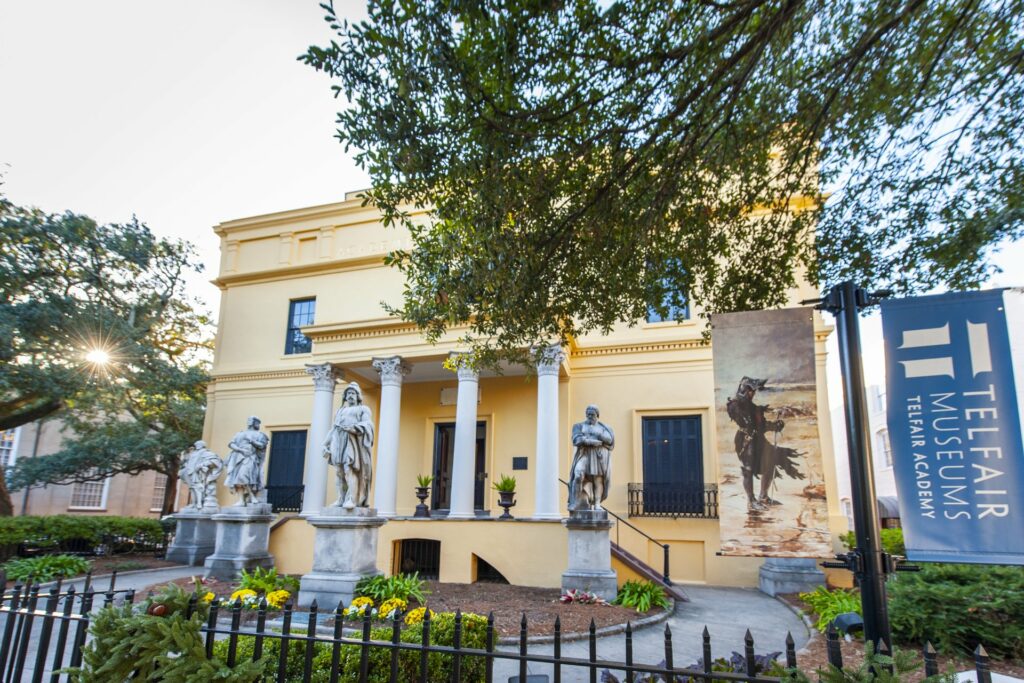
Mary Telfair, daughter of Georgia governor Edward Telfair, founded Telfair with her will of 1875. She was the sole inheritor of the mansion built for her brother Alexander in 1819 by the English architect William Jay. A philanthropic woman without heirs, Telfair bequeathed the house on Telfair Square to the Georgia Historical Society to be used as a public “academy of arts and sciences.” In 1886 the renovated and expanded Telfair mansion opened to the public as the Telfair Academy of Arts and Sciences. The museum operated under the auspices of the Georgia Historical Society until 1920, when an independent board of trustees was established.
In 1951 the historic Owens-Thomas House, an 1818 mansion built by William Jay, was bequeathed to Telfair. The name Telfair Museum of Art was adopted in 1995 to refer to both the academy and the Owens-Thomas House and Slave Quarters, which had been designated National Historic Landmarks in 1976. In 1998 Telfair launched a capital campaign to construct a third building, the Jepson Center for the Arts, which opened in March 2006. Designed by architect Moshe Safdie, the building includes extensive exhibition space; galleries devoted to African American art, regional art, and photography; an interactive gallery for children and families; an auditorium; state-of-the-art storage facilities; a sculpture garden; and other amenities. In 2009 the name Telfair Museums, referring to all three sites, was adopted.
Telfair’s permanent collection, with around 7,000 objects, reflects the influence of two early institutional leaders. The academy’s first director, the academically trained German-born painter Carl Brandt, collected more than 100 works for the institution between 1883 and his death in 1905. Brandt traveled abroad to acquire pieces by academic artists like Karl Franz Gebhardt, Arthur Hacker, Jozef von Brandt, and Julian Story. He also created a cast room, featuring full-scale plaster replicas of ancient Greek and Roman statues. Brandt himself painted a posthumous portrait of the museum’s founder, Mary Telfair, and created eight murals for the academy building, four of which are installed in the Telfair Academy’s rotunda.
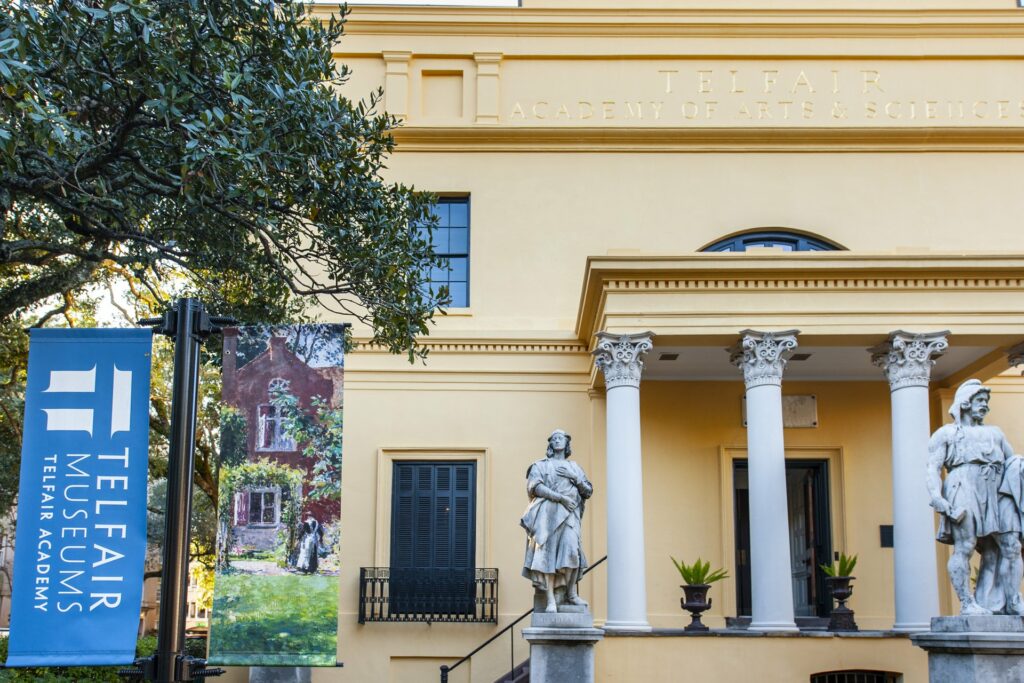
In 1906 Telfair’s board appointed American artist Gari Melchers to serve as the institution’s purchasing agent. Melchers, whose connection with Telfair originated with his Savannah-born wife, purchased works from several of the most important artists of his time. During his tenure as fine arts advisor, from 1906 to 1916, he collected more than seventy works of art for Telfair’s permanent collection.
Today Telfair’s collection is best known for the fine American impressionist and Ashcan School works Melchers collected, including paintings by Childe Hassam, Frederick Frieseke, Robert Henri, and George Bellows. The collection is also distinguished by important nineteenth-century decorative arts, particularly Neoclassical furniture dating from 1820 to 1840. Many of these pieces originally belonged to the Telfair family. Additionally, Telfair holds an extensive works-on-paper collection, including pieces by Albrecht Durer, William Hogarth, Francisco de Goya, James Abbott McNeill Whistler, and many others. In recent years Telfair has expanded its collection to include photography, folk art, and contemporary art. Acquisitions in the twenty-first century include works by Frederick Frieseke, Henry Ossawa Tanner, Gari Melchers, Romare Bearden, and Sam Gilliam.
Telfair supplements its permanent collection with a variety of temporary exhibitions, ranging from the retrospective Frederick Carl Frieseke: The Evolution of an American Impressionist, shown in 2001, to exhibits on African art, Japanese prints, photography, Neoclassical decorative arts, contemporary Georgia artists, and folk art. The institution mounts about five or six exhibitions per year.
Telfair’s permanent collection also includes its National Historic Landmark buildings, the Telfair Academy and the Owens-Thomas House and Slave Quarters. Arguably the finest example of Regency architecture in the country, William Jay’s Owens-Thomas House was one of the most sophisticated homes of its time in Savannah, incorporating complex indoor plumbing and cast-iron construction elements. In 1992 Telfair launched a major preservation project that fully restored the exterior of the Owens-Thomas House as well as the adjoining carriage house, where rare intact urban quarters for enslaved people were preserved and installed with objects made by bondsmen and free Blacks in the region.
Telfair Museums’ rich history, collections, exhibitions, and programs establish the institution as an invaluable cultural resource for Georgia, the region, and the nation.


